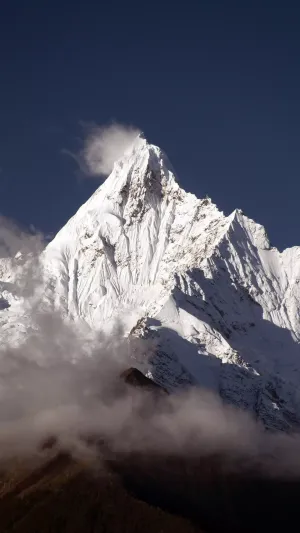The Alps, a majestic mountain range situated in south-central Europe, sprawl across northern Italy, southeastern France, Switzerland, Liechtenstein, Austria, southern Germany, and Slovenia.
This arc-shaped wonder extends approximately 1,200 kilometers in length and 130-260 kilometers in width, creating a geographical marvel that captivates the senses.
From the subtropical Mediterranean coast near Nice, France, the Alps ascend northward to the picturesque Lake Geneva and then stretch northeast to the cultural hub of Vienna on the Danube.
Encompassing an average altitude of around 3,000 meters, the Alps cover a vast area of about 220,000 square kilometers. Among its numerous peaks, an impressive 82 exceed the elevation of 4,000 meters above sea level, with the pinnacle being Mont Blanc at 4,810 meters. Located at the convergence of France, Italy, and Switzerland, Mont Blanc stands as a beacon of natural grandeur, offering breathtaking vistas in every direction.
The high altitudes of the Alps provide an environment characterized by crisp, clean air and spectacular scenery. Crystal-clear lakes, dramatic waterfalls, serene valleys, and refreshing pine forests contribute to the region's unparalleled charm. Nestled between temperate and subtropical latitudes, the Alps serve as the demarcation line between the continental humid climate of Central Europe and the subtropical summer dry climate of Southern Europe.
With year-round cold temperatures at higher elevations, the average annual temperature at 2,000 meters altitude remains around 0°C. The mountainous region receives an annual precipitation ranging from 1,200 to 2,000 mm, varying across different locations.
The Alps, not only the largest mountain range in Europe but also a colossal watershed, give birth to several main rivers in Europe. Rivers such as the Danube, Rhine, Po, and Rhone originate from the pristine landscapes of the Alps. These rivers exhibit typical mountainous characteristics in their upper reaches, with turbulent water flows and abundant hydraulic resources.
Glacial landforms are widespread in the Alps, with glacier formations being the most prominent. The peaks are distinguished by their sharp, towering profiles, showcasing ice-eroded cliffs, U-shaped valleys, cirques, hanging valleys, and glacial lakes. The Alps are renowned for their glaciers, boasting over 1,800 glaciers in the Swiss Alps alone and approximately 5,000 in total. The Aletsch Glacier in Switzerland stands as the largest glacier in the Alps, while France boasts La Mer de Glace, translating to the Sea of Ice.
During the summer months, the Alps become a haven for tourists seeking outdoor adventures such as hiking, biking, and climbing. In winter, the French Alps attract winter sports enthusiasts with opportunities for downhill skiing, snowboarding, and cross-country skiing. The region houses some of France's premier ski resorts, drawing visitors with its pristine slopes and unparalleled alpine experiences.
The French Alps, a collection of iconic ski resorts, encapsulates the energy and natural charm of the Alps. Beyond the thrill of skiing, visitors can explore rich outdoor experiences and savor the unique cultural value of a leisurely French vacation. The snow-capped peaks of the French Alps offer a breathtaking backdrop to this pristine, pollution-free ecological haven. With comprehensive facilities and first-class services, visitors can relish leisure and a profound sense of openness amidst the heavens and the earth.
For Switzerland and Europe, the significance of the Alps transcends being merely a mountain range. In terms of landforms, natural resources, human history, tourism, and leisure, the Alps are rightfully deemed the "soul of Switzerland."





